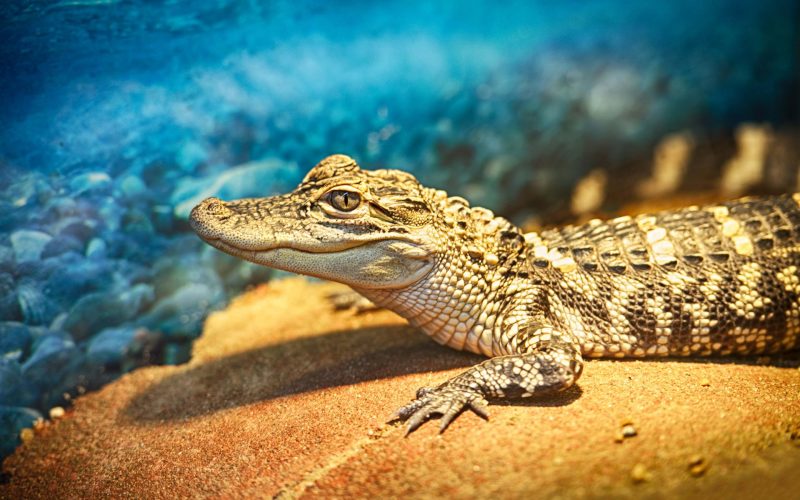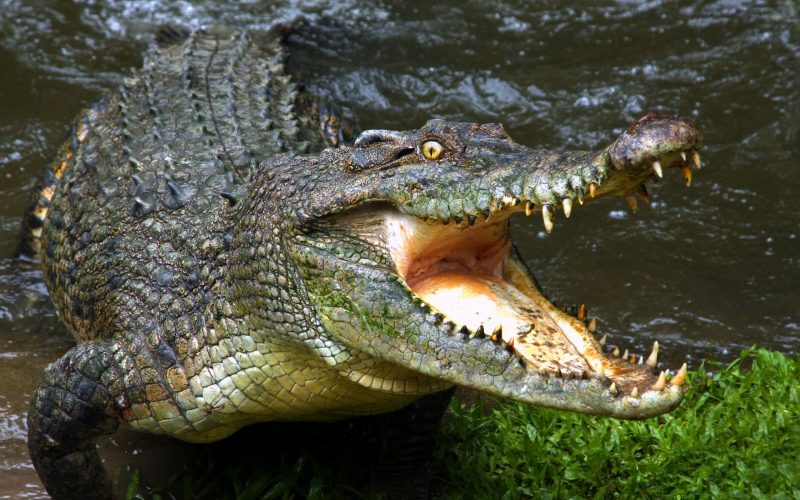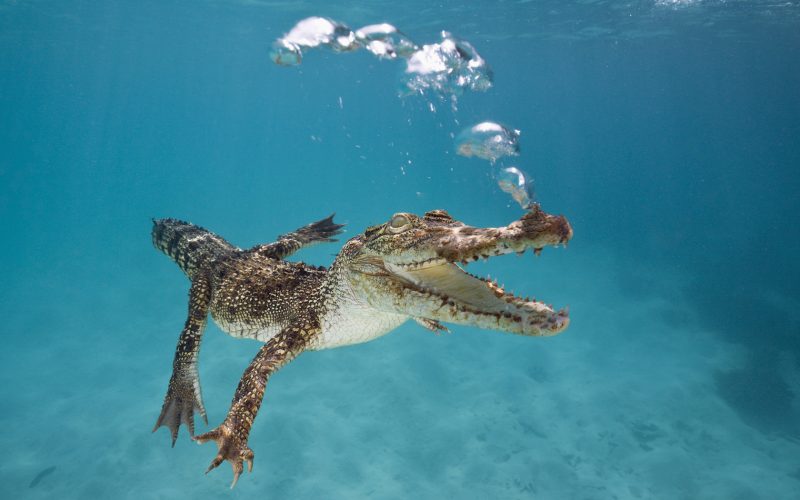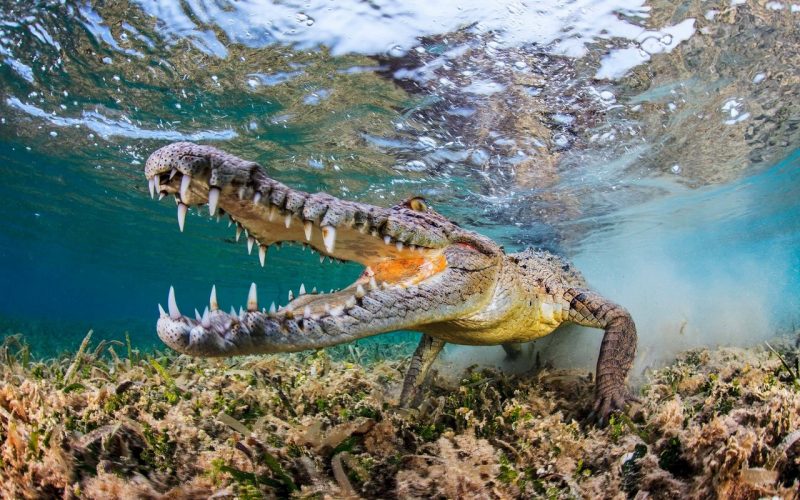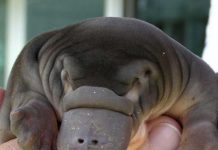A crocodile is one of the most dangerous predators on Earth, so earlier its research was a difficult task. But in our time, scientists can already explain in detail what the crocodile breathes, how it is built and why it is not synonymous with the word "alligator".
Material Content:
Features of the structure of the crocodile
The appearance of the predator demonstrates high adaptability to the aquatic environment. The crocodile has a flattened top and bottom head, elongated in length and a pointed muzzle. This reduces friction against water and increases swimming speed. The body with thick skin and horny shields ends with a long strong tail, also flattened, but already from the sides. This form is needed for more efficient strokes, because the tail is the main engine for underwater movements. Short legs are provided with five toes on the forelimbs and four on the hind legs. On land they are spread out and create a deceptive impression of awkwardness and slowness. In length, the predator reaches 5.5 meters.
An interesting feature of the structure of the crocodile is the presence of salt-removing glands in the eyes. They work in the same way as similar human organs. Hence the expression "crocodile tears."
Due to the similar appearance, these reptiles are often confused with alligators, which are actually a different family, although they belong to the same crocodile unit. The latter are better developed, and it is easiest to distinguish them by sticking out teeth that are covered by alligators. And also the faces of the crocodiles are more pointed, their color is lighter, and their head is raised slightly higher.
Area
Crocodiles are semi-aquatic animals, therefore, they are always located in water bodies or at their borders. Most of them prefer a fresh environment, but they are not afraid of a large concentration of salt.The body successfully normalizes even a strong water-salt imbalance, so these reptiles can be found not only in rivers and lakes, but also in the area of sea shores.
The best climatic conditions for these animals are heat and rain, so they live in the tropics, subtropics, as well as in the equator. These areas include continents such as Africa, northern Australia, and both Americas. Crocodiles are also found in Japan, Guatemala, the Philippines and some other islands of these climatic zones.
Can a predator breathe underwater
If we are talking about deep immersion, then, of course, the crocodile can not breathe, being completely under water. For normal functioning, this reptile needs oxygen released from the air. When immersed, the animal holds his breath for the right time - usually no more than half an hour. If danger awaits outside or there is another need to stay at the bottom for a long time, then the predator lowers its activity to a minimum in order to survive without breathing for up to 3 hours.
There is another option: when the body of the animal is submerged, and the edge of the muzzle with the nostrils is on the surface. This is achieved by opening the mouth. Water is accumulated in the oral cavity, but the respiratory organs are arranged at the reptile so that it is able to inhale through the nostrils even with a full mouth of water. No mammal or bird can do this.
What breathes an animal, respiratory organs
Like other reptiles, this predator receives oxygen from the air. The respiratory system is very distinctive and very suitable for his lifestyle.
One of the main features of the crocodile is the separation of the oral cavity from the nasopharyngeal passage due to the secondary bone palate. The nasal cavities (choanas) are also unusual: they pass through the entire elongated muzzle and almost reach the pharynx, and also have large sinuses. Their functions are ultimately unclear, but researchers suggest that they serve as resonators.
Between the mouth and the throat there is a palate - a tight valve that prevents water from seeping into the respiratory tract, and then into the lungs of the crocodile. In turn, the holes (nostrils) for receiving air are also equipped with valves. When lowered to the bottom, they reflexively close, protecting against the penetration of liquid inside.
Air enters the trachea through the nasopharyngeal passage. The tubular organ itself consists of 2 bronchi connected to the lungs of large volume. Their size not only allows you to store a lot of oxygen for immersion, but also serves as an analogue of the swimming bladder in fish. The light crocodile allows him to better control his body in water. This is due to contractions of the near-pulmonary muscles that drive air (and, hence, the buoyancy center) from side to side. The diaphragm formed by the tissues between the surface of the respiratory system, the liver and the stomach, as well as the hepatic pump, which, in turn, is connected to the pelvis, are also involved in the process.
Thus, the whole body of a crocodile is a complex mechanism in which the respiratory organs play not only the role of an intermediary between the environment and cells, but also the coordinator of movements.


